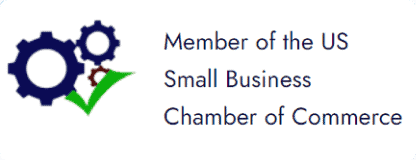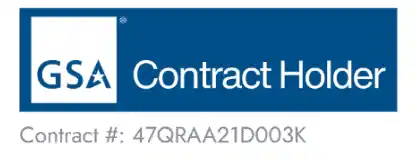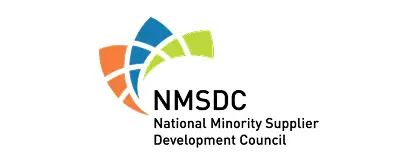Federal Stimulus Package and the New PPP Changes
News of a Federal Stimulus Package and changes to the PPP is now official, offering some new financial relief tools to business, individuals, and specific sectors.
The State of California also offered new information and gateways to financial resources through the State. You can find more details on the state stimulus here.
Here is a breakdown by topic. Please read carefully:
Stimulus Payments to Families
The Federal Stimulus Package includes another round of nontaxable direct payments to qualifying individuals. Amounts of up to $600 for individuals and $1,200 for a married couple filing jointly, plus $600 for each dependent child under the age of 17 will be sent based on 2019 filing information.
Payments begin phasing out once adjusted gross income exceeds $75,000 for a single taxpayer and $150,000 for a married couple. As was the case with the first round of payments, this second payment represents an advance on a tax credit that will be reconciled on the 2020 tax filing.
Unemployment Benefits
The bill provides an additional $300 per week through March 14, 2021. Pandemic Unemployment Assistance (PUA) that expands unemployment benefits to self-employed and others in nontraditional employment was extended as well, with the maximum number of eligible weeks increased to 50 weeks.
An additional $100 of extra benefit may also be available for certain workers who have both wage and self-employment income. Unemployment compensation received is taxable income to the recipient.
PPP Loan Program Highlights
Small businesses have access to a new round of funding for PPP Loans. The Federal Stimulus Package could not be meaningful without improving the PPP Loans program of 2020. Therefore, the PPP Loan Program has been revised and updated. The revised program has the following major changes:
- The original PPP will reopen and become available through March 31, 2021
- Expenses paid for with forgiven PPP funds are now tax-deductible for all borrowers, even those who have already applied for forgiveness.
- Streamlined forgiveness for borrowers with loans under $150,000
- Businesses can now take a second PPP loan. See details below
- For borrowers who have not yet received forgiveness, four new types of expenses are eligible non-payroll uses of PPP funds and eligible for up to 40% of total forgiveness: certain operations costs such as software or cloud computing services or administrative costs, public disturbance related property damage/vandalism/looting costs not covered by insurance, covered supplier costs, and covered worker protection costs.
- Eligibility for the PPP Loan Program has been expanded to make the program accessible to more small businesses.
- Borrowers can choose any covered period beginning on the date a borrower receives the loan and ending on a date selected by the borrower during the 8 to 24 weeks after loan origination.
- The PPP Loan Program is now available to 501(c)(6) non-profit organizations.
- PPP Loan Funds can be used in conjunction with Employee Retention Tax Credits.
- EIDL Grant funds will no longer reduce the amount of PPP loan eligibility.
- PPP forgiveness amounts will no longer be reduced by any Economic Injury Disaster Loan (EIDL) grant received.
Looking for answers to frequently asked questions regarding the second draw of the PPP? Read here.
Second PPP Loan
Businesses can take a second Paycheck Protection (PPP) Loan (up to $2 million) once a first round of PPP Loan funds have been exhausted. Borrowers must have fewer than 300 employees (down from 500). Additionally, the business must be able to establish a 25% drop in gross receipts during a quarter in 2020 relative to that same quarter in 2019.
Usage of proceeds will follow the same protocol as round one loans. Consequently, loans will be equal to the lesser of 2.5 multiplied by average monthly payroll costs for the one-year period before the loan is made or calendar year 2019, or $2 million. The hospitality industry, however, will use a multiple of 3.5
For borrowers who have not yet received forgiveness, four new types of expenses are eligible non-payroll uses of PPP funds and eligible for up to 40% of total forgiveness.
- 1Certain operations costs such as software or cloud computing services or administrative costs
- 2public disturbance related property damage/vandalism/looting costs not covered by insurance
- 3Covered supplier costs
- 4Covered worker protection costs
EIDL Loan & Grant Highlights
The Economic Injury Disaster Loan Program is accepting applications (Apply here). The latest Federal Stimulus Package enables and offers some updates:
- The EIDL advance grant will again be available, allowing businesses who did not receive the full $10,000 advance to reapply for the difference.
- The EIDL advance will not be taxable and expenses paid with the funds will be tax deductible.
- The same is true for borrowers of traditional Section 7 SBA loans who had six months of their principal and interest paid under the CARES Act, with the bill requiring the SBA to pay an additional three to eight months beginning in February 2021.
- A non-taxable grant is now available for eligible shuttered venues, theaters, and museums as well. Such businesses include non-profit organizations
Are you saving money and enjoying AccuPay’s amazing customer service? If you are not, check out how much we can save you. Our pricing beats all competition but most importantly, our services are stellar.
Employee Retention Tax Credit Highlights
As part of the Federal Stimulus Package, the Employee Retention Credit (ERC) is extended to July 1, 2021. Businesses may now take the ERC and the PPP, but the wages used in computing the ERC are not forgivable costs under the PPP program.
Employee Retention Credit is explained in details in this separate article.
For periods in 2021, the following changes apply to the ERC:
- A business can now apply for both PPP and the ERC. (ERTC and PPP funds cannot be applied to the same wages. Employers must be careful to itemize and account for where each type of funds is being applied).
- Non-profit organizations are eligible to use this ERTC program if operations have been partially to fully suspended.
- The credit percentage is increased from 50% to 70% of qualified wages.
- Qualified wages are increased from $10,000 in total per employee to $10,000 per quarter per employee.
- Qualified wage restrictions apply at 500 employees instead of 100.
- Drop in gross receipts requirement decreases from 50% to 20% over a prior quarter.
Additional Federal Stimulus Package Highlights
- Pre-Existing SBA Loan Relief – Businesses with SBA loans taken prior to the covid-19 pandemic will continue to see the federal government cover principal and interest payments for up to 18 months. This is an extension from the original six month of relief.
- Pandemic Unemployment Insurance –Displaced workforce will be eligible for an additional $300 per week in pandemic unemployment insurance, which is down from the original $600 offered in the CARES Act. All persons on unemployment insurance will be automatically enrolled into the the benefit program. The program expires March 14, 2021.
- Grants for Live Venue Operators – A new grant program for live venue operators will be available to live venue operators and promoters, theaters, independent movie theaters, live performing arts organization operators, museum operators and talent agents (with a 25%+ reduction of revenue). Grants will be either $10 million or 45% of gross earned revenue in 2019. Grant funds will be limited for use. Unfortunately, this grant does not apply to applicants who have received PPP Loan Funds. Grant application portal is pending through the SBA. Check the SBA site for updates.
Other Credits and Deductions
- 1Business meals from a restaurant will be 100% deductible for 2021 and 2022, rather than 50%.
- 2Above-the-line charitable donations for non-itemizers will be available in 2021 as well and increased to $600 for those married filing jointly in 2021.
- 3The increased individual AGI threshold from 60% to 100% and increased corporate limitation from 10% to 25% of taxable income for qualifying cash contributions is extended through 2021.
- 4A special temporary rule allows taxpayers taking the Earned Income Tax Credit or the Child Tax Credit the ability to use income from their 2019 tax year to determine a 2020 credit.
- 5Favorable depreciation rules for taxpayers electing out of tax code Section 163(j) business interest expense limitation rules.
- 6Educators’ deductible costs now include personal protective equipment and other coronavirus prevention related supplies.
- 7Farmers may elect to retain the two-year carryback of a net operating loss (NOL), rather than claim a five-year carryback as provided for in the CARES Act. Farmers may also revoke the election to waive the carryback of an NOL.
- 8The employee portion of certain payroll taxes deferred under President Trump’s memorandum on wages paid from Sept. 1, 2020 through Dec. 31, 2020 have an extended repayment period now through Dec. 31, 2021, rather than April 30, 2021.
- 9Taxpayers can roll unused health and dependent care flexible spending amounts from 2020 to 2021, and from 2021 to 2022.
Conclusion
This Federal Stimulus Package bill provides significant relief to businesses and individuals alike. There are many areas of complexity, but overall, is provides real value to those impacted by Covid-19.
Please reach out if you would like help with any applications. It is important you read and understand these articles and guides before reaching out.





